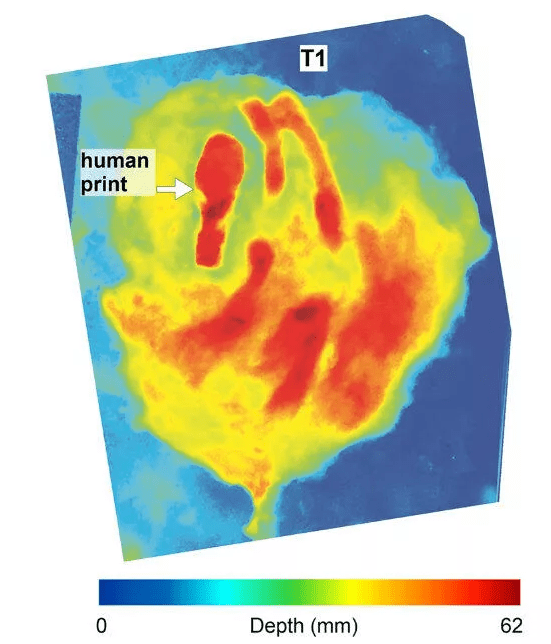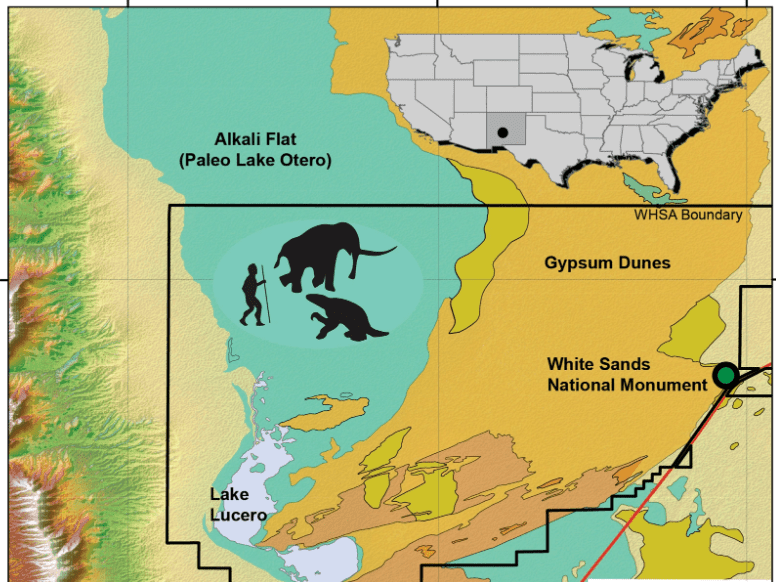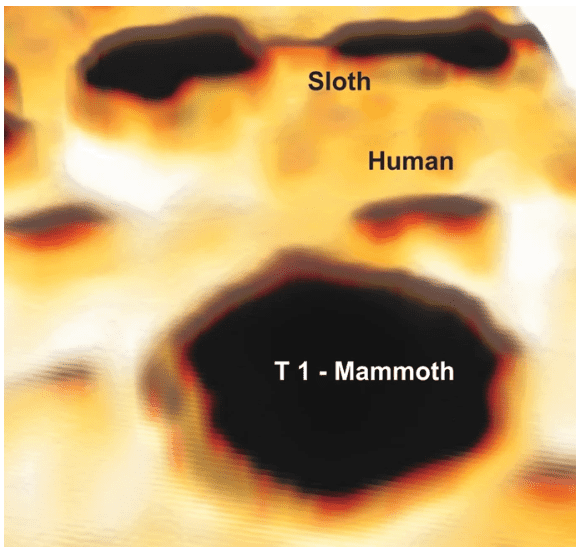It’s like looking into the past — through radar.

Thomas Urban/Matthew Bennett, et al.
Footprints of ancient humans aren’t really that common. Researchers have found some on occasion, but the set of circumstances needed for them to preserve are very specific, and very rare. Megafauna tracks are a bit more common. But areas with both are pretty much unicorns — you never see them.
Footprint evidence of human-megafauna interactions is extremely rare in the archaeological and palaeontological records. Recent research suggests some environments (particularly ancient playa environments may hold such evidence) — but the prints may not be visible. In other words, they are there, but you can’t really see them. These so-called “ghost tracks” comprise a rich archive of biomechanical and behavioral data that remains mostly unexplored.
But just because you can’t see them with your eyes doesn’t mean you can’t see them at all — and this is where physics enters the fray.
Researchers from Cornell used a method called ground-penetrating radar to “see” potential footprints. This specialized radar method sends out an electromagnetic pulse and then measures the reflected signal from the subsurface. It’s a method commonly used in archaeology, for instance, to detect buried buildings and structures.
The researchers used this approach to examine the footprints of humans, mammoths and giant sloths in the White Sands National Monument in New Mexico — an area known for footprint records of megafauna.

The method proved to be effective at imaging footprints. The approximate shape and size of the footprint was visible to the radar, and researchers confirmed the presence of known tracks — they even found some new ones. The presence of giant sloths in the area, for instance, was only revealed by the radar.
“The technique could possibly be applied to many other fossilized footprint sites around the world, potentially including those of dinosaurs,” said Thomas Urban, research scientist at Cornell and lead author of the study.
The footprints revealed this to be an even more active area than previously thought. Humans and megafauna shared and roamed the common territory.

Furthermore, some properties of the human footprints can be resolved with this approach, although bio-mechanical data about human locomotion would require a higher data resolution (which researchers plan on acquiring in the future).
However, the real surprise came when they analyzed a mammoth footprint: the footprint itself had another, human footprint inside it.
“We never thought to look under footprints,” said Urban. “But it turns out that the sediment itself has a memory that records the effects of the animal’s weight and momentum in a beautiful way. It gives us a way to understand the biomechanics of extinct fauna that we never had before.”
The approach can be applied to numerous fossilized track sites, which is what researchers plan to do next. Ground-penetrating radar is a nondestructive method that can be carried out with relative ease and speed. An antenna (which looks a bit like a lawn mower) is dragged or pushed over a surface. GPR surveying was able to resolve 96% of the human tracks present and all of the larger vertebrates, which is promising for future studies. Furthermore, different equipment (particularly higher-frequency radars) can offer even more data resolution.
“There are bigger implications than just this case study,” Urban said. “The technique could possibly be applied to many other fossilized footprint sites around the world, potentially including those of dinosaurs. We have already successfully tested the method more broadly at multiple locations within White Sands.”
The study was published in Nature Scientific Reports.









